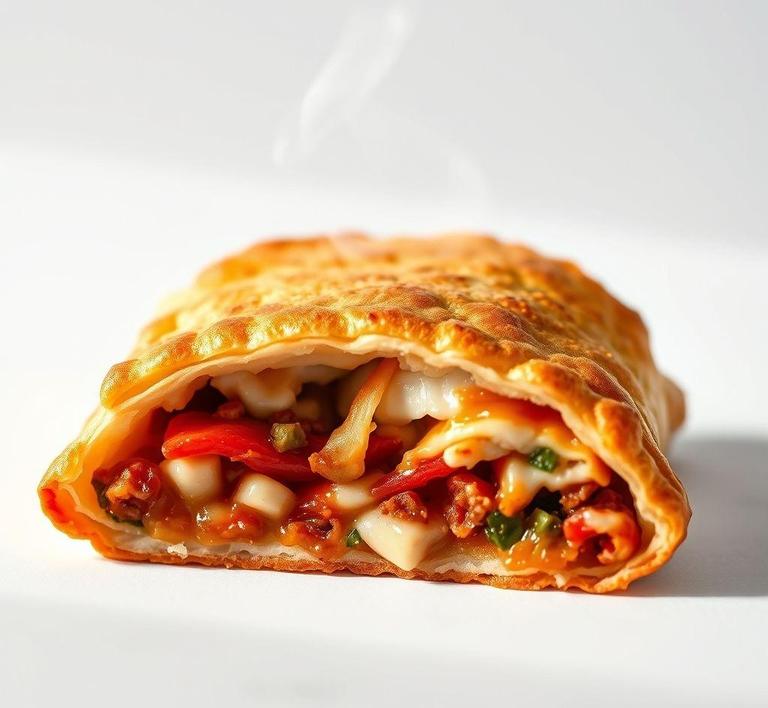Refreezing Hot Pockets might seem like a simple task, but it’s important to know the right way to do it to maintain their taste and texture. Whether you have some leftover Hot Pockets that you want to save for later or you’re looking to stock up for the future, knowing how to properly refreeze them can make all the difference. In this guide, we’ll walk you through the best practices for refreezing Hot Pockets, from how to store them to tips on reheating them without losing that delicious, melty center. So, let’s dive in and make sure those Hot Pockets stay just as tasty the second time around!
Can You Refreeze Hot Pocket?

The answer to whether you can refreeze a Hot Pocket depends heavily on how it was handled after its initial thawing. If your Hot Pocket has been fully thawed in the refrigerator and has remained at or below 40°F (4°C), then yes, technically, you can refreeze it. The USDA’s guidelines on food safety state that food thawed in the refrigerator is generally safe to refreeze, although there may be a loss of quality. However, if the Hot Pocket has been left out at room temperature for more than two hours-or even one hour in temperatures above 90°F (32°C)-it is not safe to refreeze. Bacteria such as Salmonella and Listeria can multiply rapidly under these conditions, making the food unsafe even if it’s later refrozen.
It’s crucial to distinguish between cooked and uncooked Hot Pockets. If the Hot Pocket was cooked and then partially eaten or left out, it’s best to avoid refreezing it altogether. In contrast, if it’s been thawed in the fridge but not microwaved or baked, the risks are lower-but the quality may still take a hit.
How To Refreeze Hot Pocket?
If you’ve determined that your Hot Pocket is safe to refreeze, here’s how to do it properly to preserve its texture and flavor as much as possible:
- Cool It Down Properly (If Cooked): If the Hot Pocket has been heated but you want to refreeze leftovers, let it cool completely at room temperature for no more than 30 minutes. After that, transfer it to the fridge for a couple of hours to chill thoroughly before freezing. Never place a hot or even warm Hot Pocket directly into the freezer, as it can raise the internal temperature of the freezer and compromise other stored food.
- Wrap It Tightly: Use a layer of plastic wrap followed by aluminum foil, or place the Hot Pocket in an airtight freezer bag. This minimizes exposure to air, reducing the risk of freezer burn-a phenomenon that causes icy crystals to form and dehydrate the food.
- Label and Date: Always label your refrozen Hot Pocket with the date it was refrozen. Try to consume it within 1-2 months for optimal quality, even though it may remain safe longer if continuously frozen at 0°F (-18°C).
- Reheat Thoroughly: When ready to eat, ensure the Hot Pocket is reheated to an internal temperature of 165°F (74°C) to eliminate any bacteria that may have developed during its previous handling.
Quality Impact
While refreezing a Hot Pocket can be done safely in some cases, the real concern is the degradation in taste, texture, and overall quality. Hot Pockets are designed to go from frozen to hot and crispy in a matter of minutes, thanks to their specially formulated dough and fillings. When you thaw and refreeze them, several undesirable things can happen:
- Texture Loss: The dough may become soggy or gummy due to ice crystal formation during refreezing, which breaks down the gluten structure of the crust. Instead of achieving that signature flaky crunch, you may end up with a limp, chewy exterior.
- Flavor Degradation: Some ingredients, especially dairy-based sauces or meats, are particularly sensitive to freeze-thaw cycles. The creamy texture of cheese can separate and become grainy, and meats may become tough and less flavorful.
- Moisture Imbalance: Refreezing can draw moisture away from the interior fillings, resulting in dry meat, vegetables, or cheese. Conversely, excess moisture trapped in the crust can create a soggy bite.
While the food may remain safe to eat, the culinary experience could be greatly diminished-far from the satisfying, melty treat you anticipated.
Refreezing a Hot Pocket is possible under strict conditions, primarily when it has been thawed safely in the refrigerator and hasn’t lingered at unsafe temperatures. However, while the process won’t necessarily make you sick if done correctly, it can compromise the snack’s hallmark features: its flaky crust, gooey cheese, and tender fillings.
If you find yourself frequently needing to refreeze partially thawed Hot Pockets, consider portioning them more carefully or storing them in a way that minimizes waste. Ultimately, enjoying a Hot Pocket in its original, freshly cooked state offers the best texture, taste, and overall satisfaction-no compromises necessary.
Is It Safe To Refreeze A Hot Pocket?
Hot Pockets are a quintessential American freezer snack-convenient, cheesy, and undeniably comforting. But what happens when life interrupts your microwave session or your thawed snack sits out longer than intended? Can you safely refreeze it?
Technically speaking, it is possible to refreeze a Hot Pocket, but the key word here is “safely”. The safety of refreezing any perishable food item, including Hot Pockets, depends heavily on how long it has been thawed and the temperature at which it was stored during that time. According to USDA guidelines, any perishable food (especially those containing meat, cheese, or dairy) should not be left at room temperature for more than 2 hours-or 1 hour if the ambient temperature is above 90°F.
If your Hot Pocket has only been thawed for a short time, and it has remained below 40°F (refrigeration temperature), you’re generally in the clear to refreeze it. However, it’s crucial to understand that while refreezing may be microbiologically safe, it can significantly affect the food’s texture and flavor. Hot Pockets rely on their gooey fillings and crisp outer crust-qualities that can deteriorate with each freeze-thaw cycle.
In short: Yes, it can be safe-but only under strict conditions. When in doubt, remember: "If it smells off or sat out too long, don’t take the risk."
Signs That a Hot Pocket Should Not Be Refrozen
Your senses are the first line of defense against unsafe refreezing. Here’s what to look for:
-
Unpleasant Odor:
A sour, rancid, or oddly fermented smell is a red flag. This typically indicates bacterial growth, which accelerates in the danger zone between 40°F and 140°F.
-
Discoloration:
If your Hot Pocket looks grayish, dull, or has any unusual hues (especially around the meat or cheese), that’s a signal it’s past its prime.
-
Slimy Texture:
Meat or fillings that feel sticky, tacky, or slimy to the touch should not be consumed or refrozen.
-
Mold:
This should go without saying-any sign of mold, even a tiny speck, means it’s time for the trash bin, not the freezer.
-
Time Out of the Freezer:
If the Hot Pocket was left out for more than 2 hours-or more than 1 hour on a hot day-bacteria may have reached unsafe levels. Even if it still looks and smells okay, the risk of foodborne illness isn’t worth it.
Remember, the goal isn’t just preserving food but preserving health. If any of these signs appear, it’s safer to discard than to refreeze.
Common Refreezing Mistakes
People often underestimate the complexities of refreezing, especially with processed foods like Hot Pockets. Here are the most common pitfalls to avoid:
-
Refreezing After Full Cooking:
A Hot Pocket that has been fully cooked and then left at room temperature before attempting to refreeze poses significant safety risks. Once cooked, the internal temperature has risen into the bacterial growth zone and shouldn’t be returned to the freezer unless cooled properly and promptly.
-
Multiple Thaw-Refreeze Cycles:
Each thawing and refreezing cycle compromises the integrity of the food. The filling separates, the crust turns soggy, and ice crystals form, breaking down cellular structures. Over time, the flavor degrades and the risk of contamination increases.
-
Using the Microwave to ‘Refreeze’:
Some might attempt to cool a Hot Pocket using the microwave’s defrost setting. This is ineffective and can be dangerous. Microwaves heat unevenly, leaving cold spots where bacteria can thrive, especially in cheese and meat-laden products.
-
Not Using Airtight Packaging:
Throwing a partially thawed Hot Pocket back into the freezer unwrapped is an invitation for freezer burn. This ruins the texture and flavor, leaving behind dry, chalky patches and unpleasant aromas.
Tips and Tricks for Safely Refreezing a Hot Pocket
If you must refreeze, here are best practices to do it right:
-
Chill Before You Freeze:
If your Hot Pocket has been thawed but not cooked, quickly refrigerate it (within the 2-hour window) to bring its internal temperature below 40°F before refreezing. This minimizes bacterial growth and preserves freshness.
-
Use Airtight Packaging:
Wrap the Hot Pocket tightly in plastic wrap or place it in a freezer-safe zip-top bag. Then, place it in an airtight container or another bag for double protection against freezer burn and odor transfer.
-
Label with Dates:
Always write the date of refreezing on the packaging. Most frozen foods should be used within 1-2 months for optimal quality. Beyond that, they may still be safe but will likely taste inferior.
-
Reheat Thoroughly:
When you’re finally ready to enjoy your twice-frozen Hot Pocket, ensure it’s heated to an internal temperature of 165°F. Use a food thermometer if you’re unsure-especially with meats or poultry fillings.
-
Consider Cutting It in Half:
If you think you won’t finish a whole Hot Pocket, cut it in half while still frozen, cook only what you need, and leave the rest untouched in the freezer. This avoids unnecessary thawing and refreezing.
Conclusion
While the idea of refreezing a Hot Pocket may seem harmless on the surface, the truth lies in the details. Timing, temperature, and careful observation are your allies in determining whether refreezing is safe or a recipe for regret. Improper handling can introduce harmful bacteria, degrade flavor and texture, and compromise the snacking experience altogether.
So the next time you find yourself mid-thaw with a change of plans, stop and consider: Was it kept cold? Does it still look and smell fresh? If yes, a safe refreeze might be possible. If not, it’s far better to toss one Hot Pocket than to risk tossing your health.


